Jaipur’s Flowering Shrubs:What’s blooming at Savista?
Towards the end of the Rajasthan monsoon, for about three to four weeks, the rains stop abruptly and a fierce heat and humidity set in. The monsoons are not yet over; the final signing off with a few torrential showers accompanied by thunder and lightning is yet to happen – usually by the third week of September – after which the autumn begins to set in. By the beginning of October it is autumn, one of the most beautiful seasons of the year. In the interim, through much of September, there may be days when the sky is gently overcast, causing the colours of nature to take on a mysterious luminosity and making us humans grateful for the cool breezes that come blowing; these are the days when it is a joy to be outdoors. But for the most part, it is unrelenting bright sunshine, heat and humidity. This is the season of the “short summer”, when it almost seems worse than the real summer (end April to mid July)!
It seems ungrateful to complain about something as trivial as the heat when other regions could be in floods at this time of year, for instance in Kashmir, where flash floods have killed hundreds and dishoused and destroyed the futures of hundreds of thousands of people. In fact we in Jaipur are lucky because even in such humid and hot weather, nature gives us reasons to rejoice. Several shrubs have been flowering their hearts out on the Savista grounds, and rejoicing with them (and us) are butterflies and microscopic sunbirds drunk on nectar!
1. Golden Duranta
Common name: Golden dewdrop
Botanical name: Duranta repens
Family name: Verbanaceae
Hindi name: Nilakantha (sky flower)
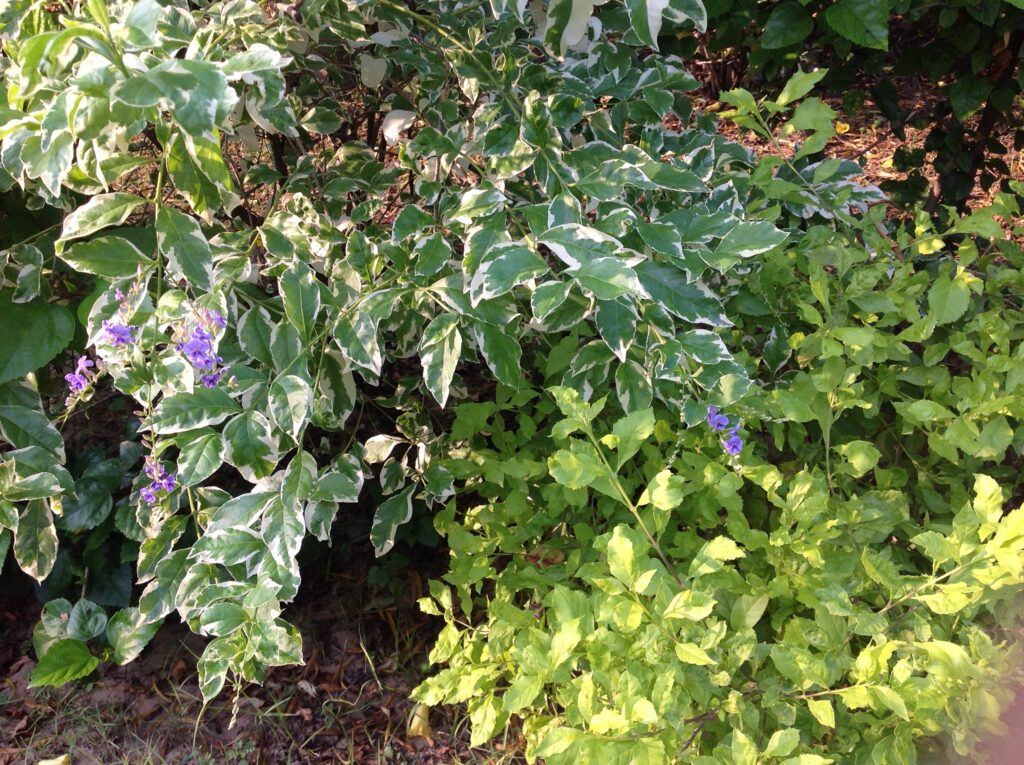
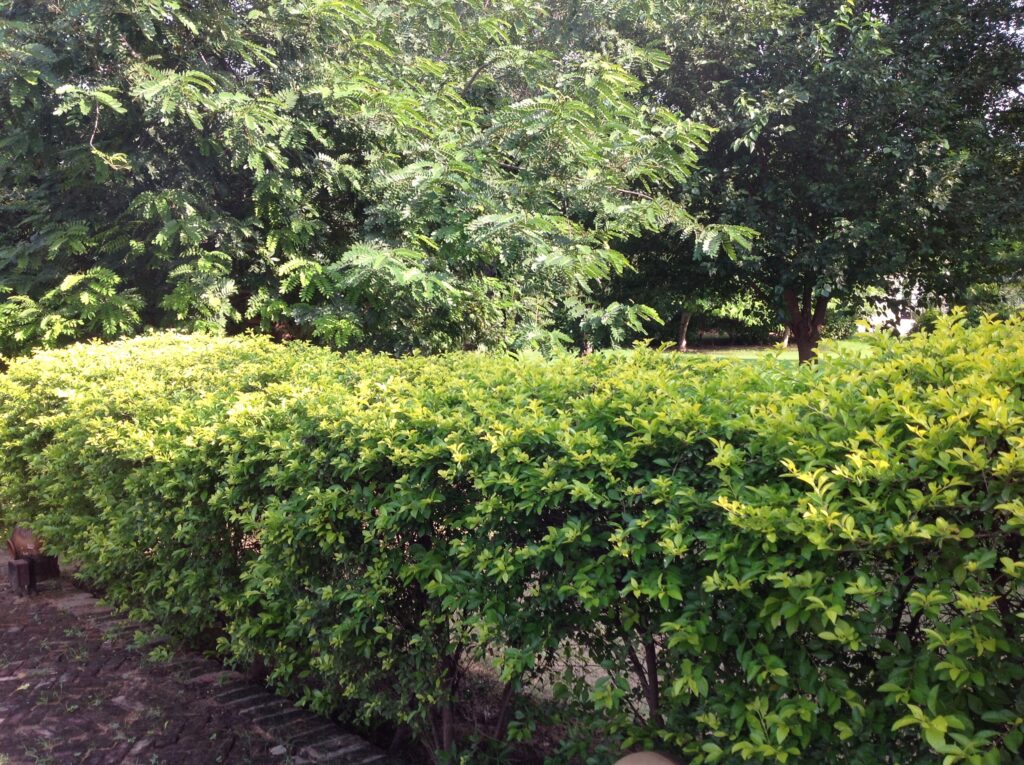

This is a large, fast growing multi-stemmed shrub with brilliant golden yellow leaves; there is also a variegated variety with dark green and white-edged leaves. We have a few of the latter, but our preference is for the golden variety. The borders and screens along our brick-paved pathways leading from the haveli into the gardens and past the lily pool in front of the house are ablaze with the gold of this shrub. Both varieties have long delicate clusters of tiny mauve bell-like flowers that constantly have butterflies flitting around them. In winter they send out bunches of tiny golden berries.
2. Hibiscus rosa sinesis
Common name: Hibiscus
Family name: Malvaceae
Hindi name: Gurhal
Sanskrit name: Japa Pushpam
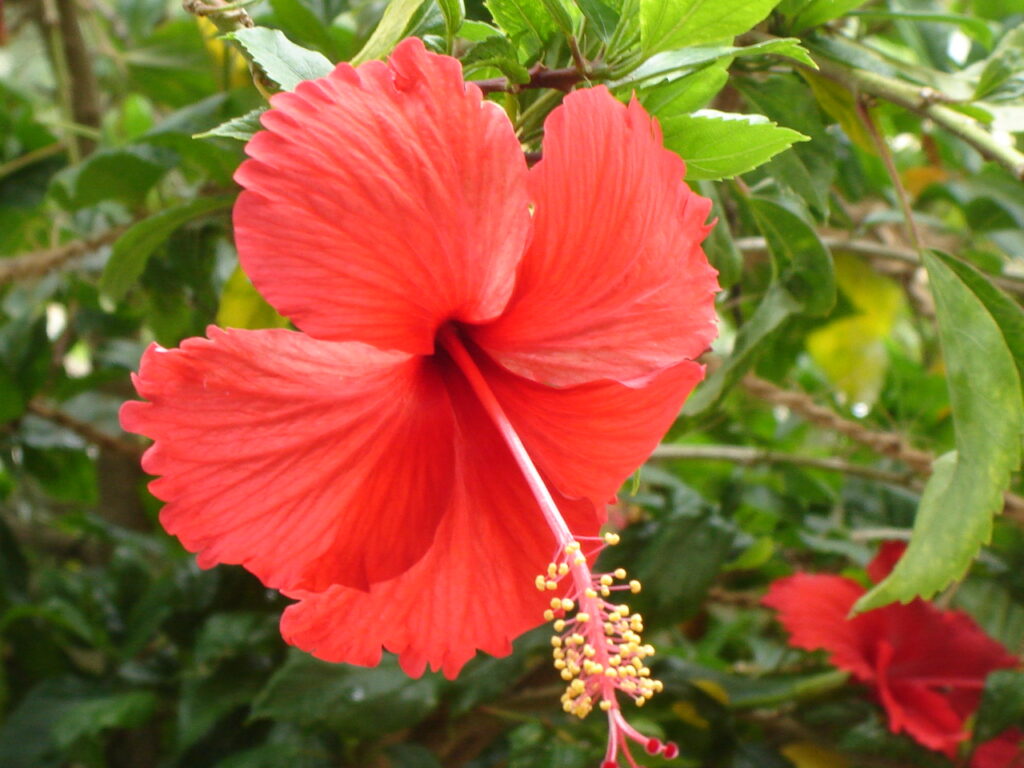
This is a bushy evergreen shrub that grows tall and dense and sends out brilliant red, pink and white flowers round the year. Sunbirds and butterflies hover constantly over them. We have planted hibiscus as hedges along the pathways in the eastern court, and all around the pergolas which serve as our alfresco breakfast and dining spaces. Hibiscus tea is one of our favourite drinks.
3. Firebush
Common name: scarlet bush, hummingbird bush
Botanical name: Hamelia Patens
Family name: Rubiaceae
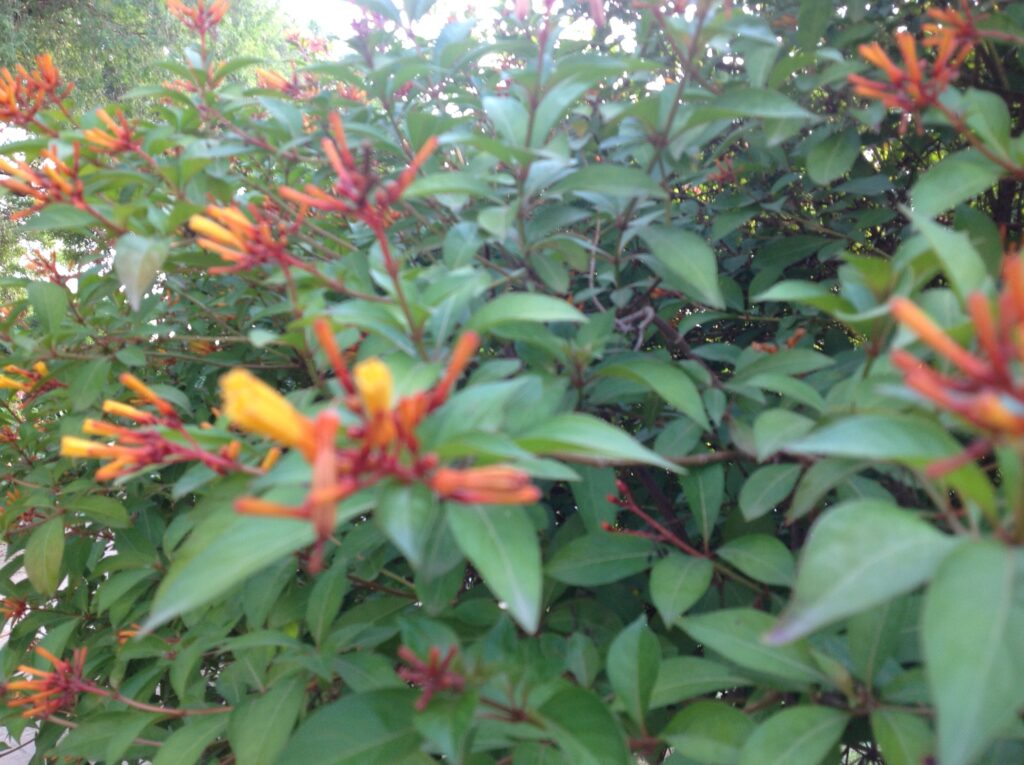
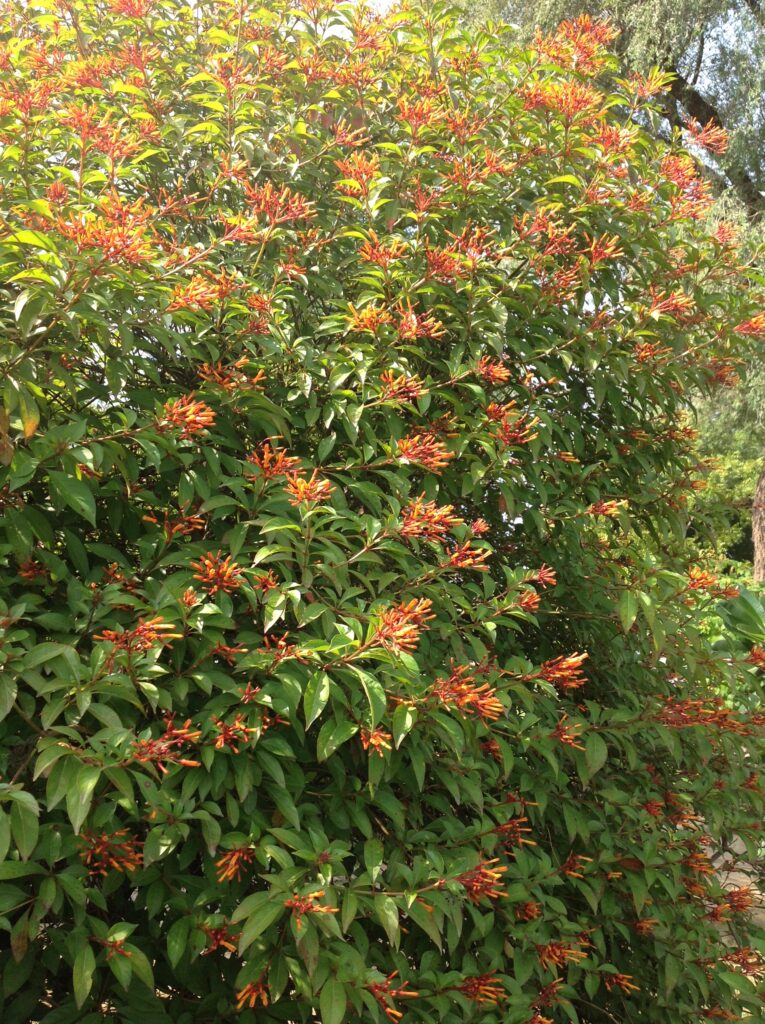
This is a semi-woody shrub with clusters of microscopic orangish-scarlet tubular flowers that only sunbirds are tiny enough to alight on and send their thin beaks in to drink. What we love about this plant is not only the sight of the sunbirds drinking deeply and happily from the flowers; in winter, the otherwise green leaves turn a rich red, keeping the shrub looking like a “firebush” virtually round the year. We have planted this bush in our front garden where it has been crowned in the form of short trees, and along the driveway. In both places it has grown to a height of nearly 10 feet.
4. Nerium Oleander
Common name: Oleander, Milk bush
Botanical name: Nerium Oleander and and Cascabela Thevetia (Thevetia peruviana)
Family: Apocynaceae
Hindi name: Kaner
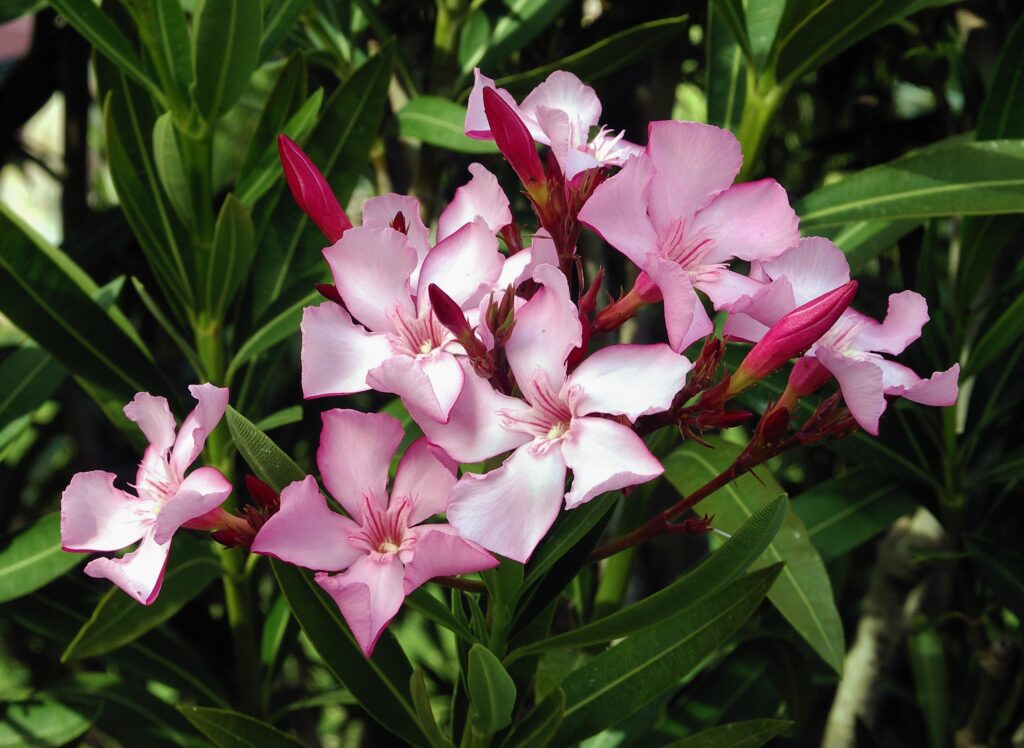
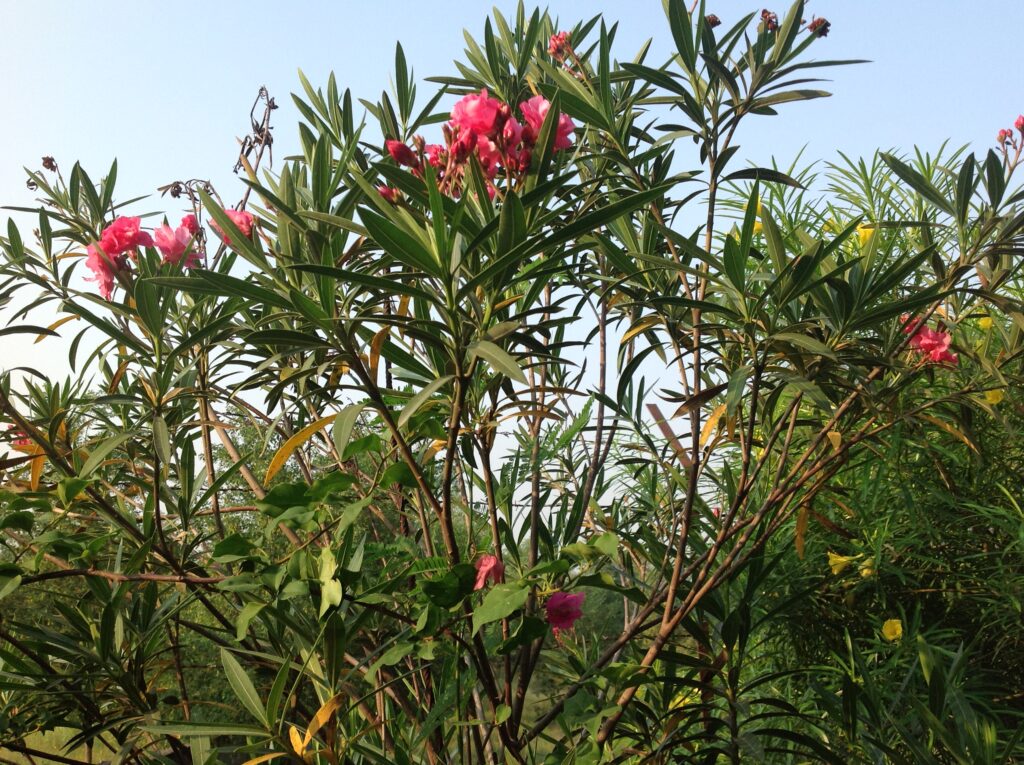
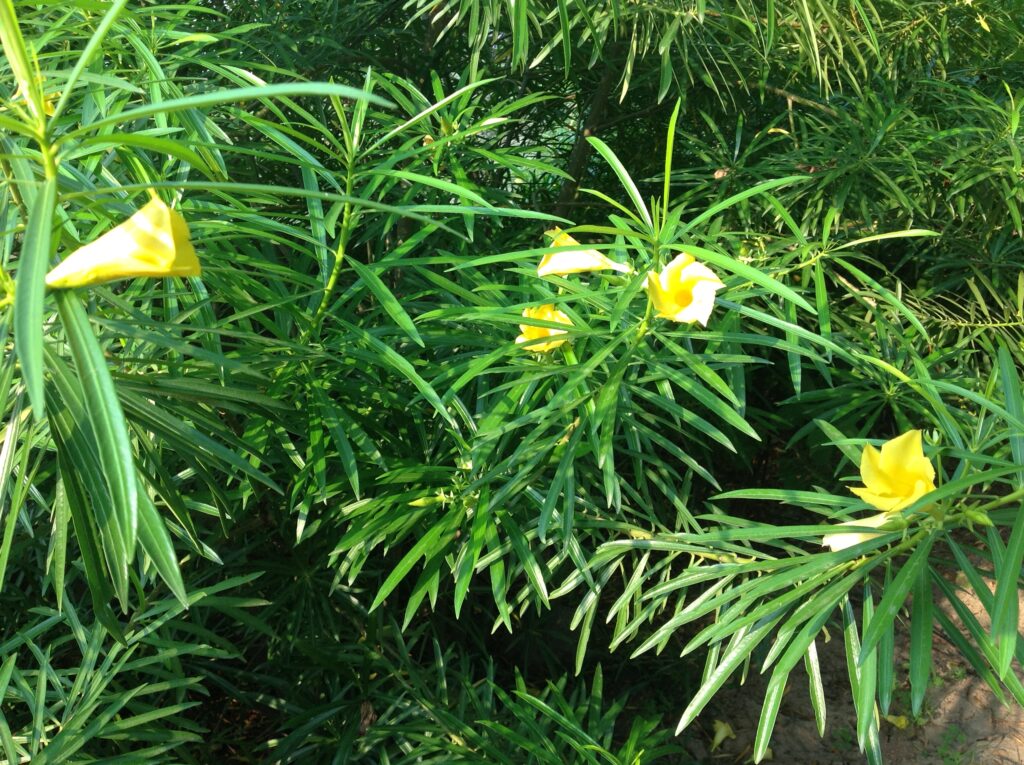
This is an large ornamental flowering shrub with beautiful sweet-smelling pink flowers and glossy deep green leaves which have a waxy coating that reduces water loss. Both the pink variety (Nerium oleander) and the related Yellow Oleander (sweet-smelling yellow, peach and white flowers and bright green clusters of thin long leaves) grow along our boundary wall and provide a pleasing green screen. Butterflies and many of our resident birds such as the Asian Koel, Brahminy Myna, Red vented bulbul, Common Myna, and white browed bulbul feed on the flowers and fruits.
5. Jatropha
Common name: Spicy Jatropha, Barbados nut, firecracker, peregrina
Botanical name: Jatropha integrrima
Family: Euphorbiaceae (castor family)
Hindi name: Jamal ghota, Jangli arandi
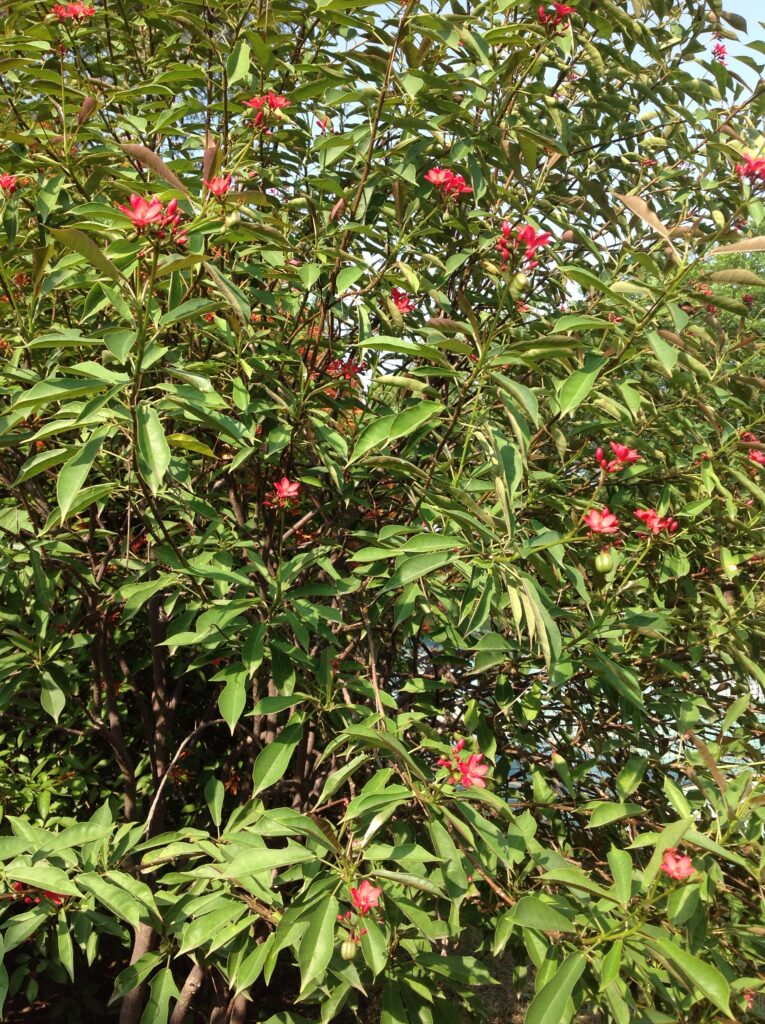
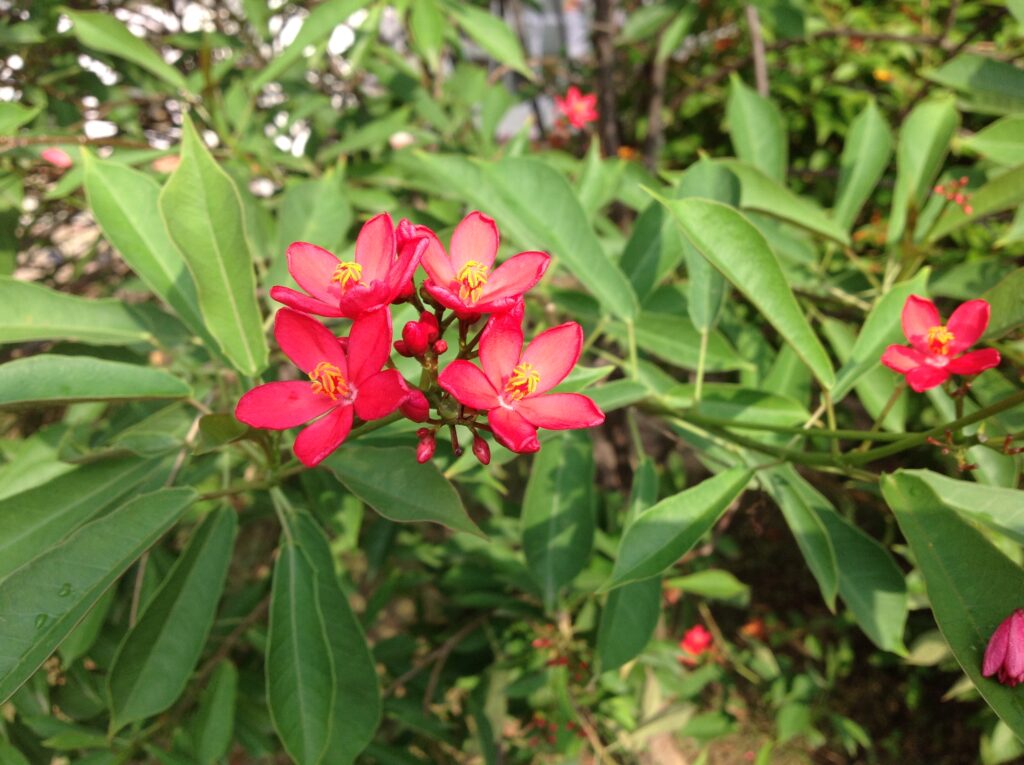
This slender tall shrub is a distant relative of the poinsettia and a favourite of butterflies. Being drought tolerant, it grows well under semi-arid conditions as in Jaipur and flowers virtually round the year. Although tiny (around one inch) in size the pink to cherry-red waxy flowers are delicately beautiful, and grow in rounded clusters. As a perfect foil to their beauty are the distinctive dark green leaves – glossy, dense, long (7 inches) and fiddle shaped. This plant grows in our front garden and along the driveway and brick-lined pathways, where despite its understated looks, its stunning beauty shines through the rest of the foliage.
6. Crape Jasmine
Common name: Moonbeam
Botanical name: Tabernaemontana coronaria
Family: apocynaceae
Hindi name: Chandini
Sanskrit name: Chandani
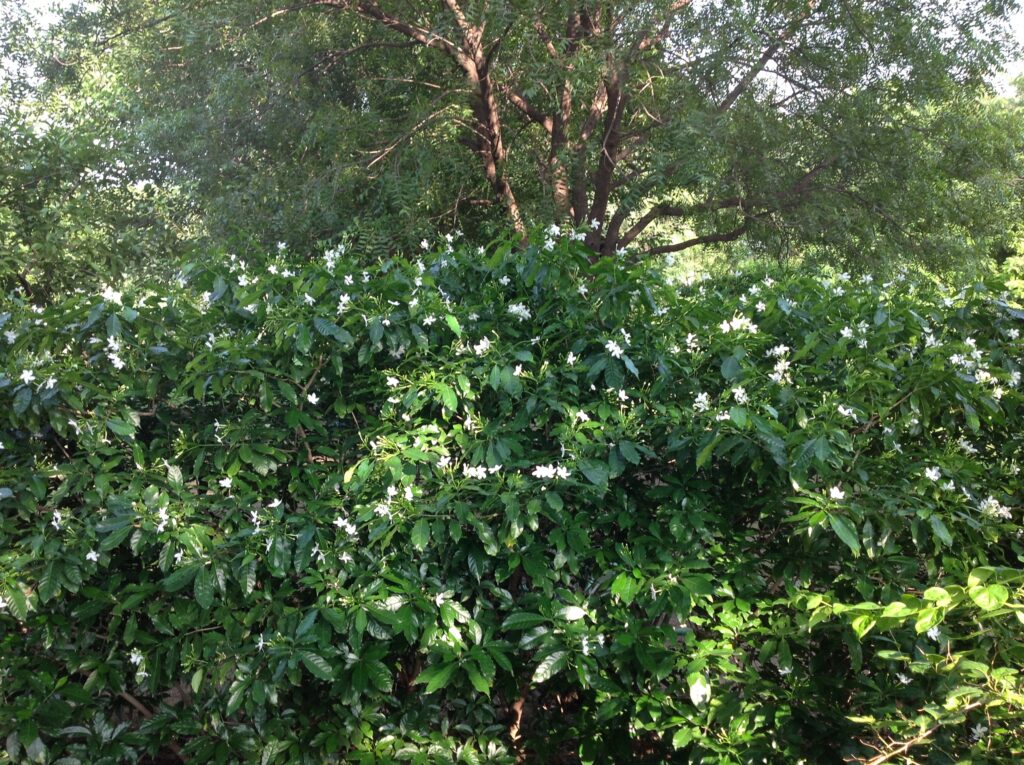

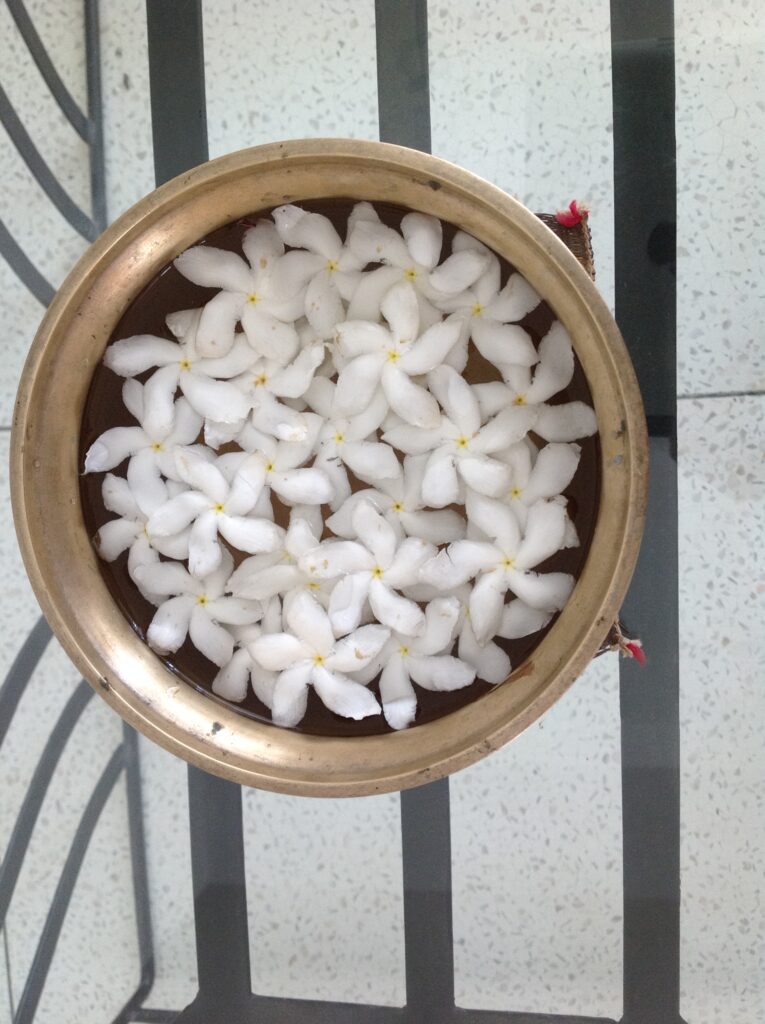
This is an evergreen generously sized bush with dazzling white flowers that are set off by the deep glossy green of the leaves. The flowers come in both single and double varieties (the latter called Tabernaemontana divericata) and make an amazing display virtually round the year. We have planted them everywhere as hedges, and these days taking an early morning walk is particularly rewarding because everywhere you can see these brilliant white flowers both on the plant and carpeting the ground. It is this pure white and densely flowering quality that has given the plant the name Moonbeam (Chandini in Hindi), because on a moonlit night the flowers are fabled to rival the moonlight in their dazzling beauty.
7. Combretum indicum
Botanical name: Quisqualis indica
Common name: Rangoon creeper, Burma creeper, Chinese honeysuckle
Family: combretaceae
Hindi name: Madhumati
Sanskrit name: Madhumalati
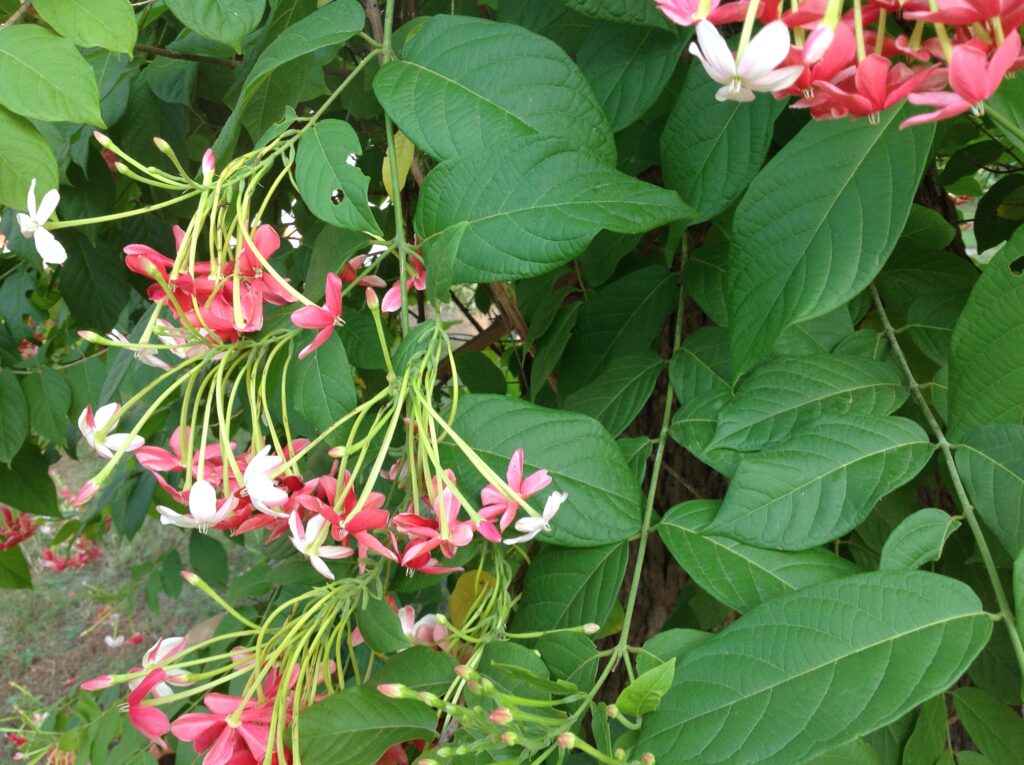
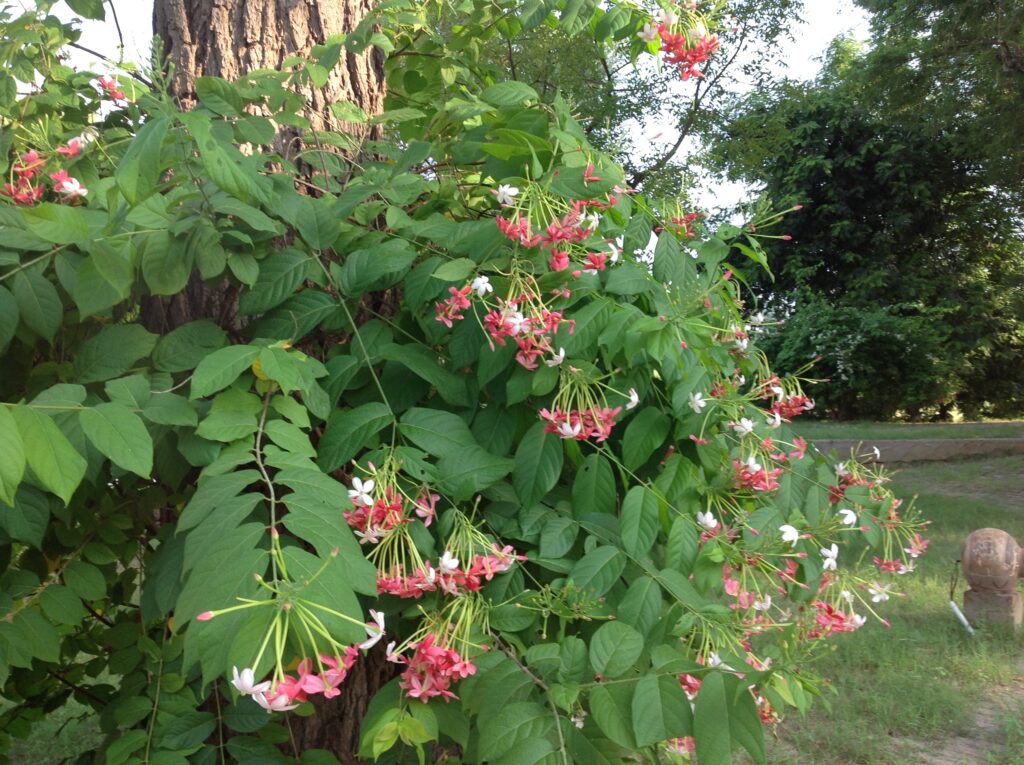
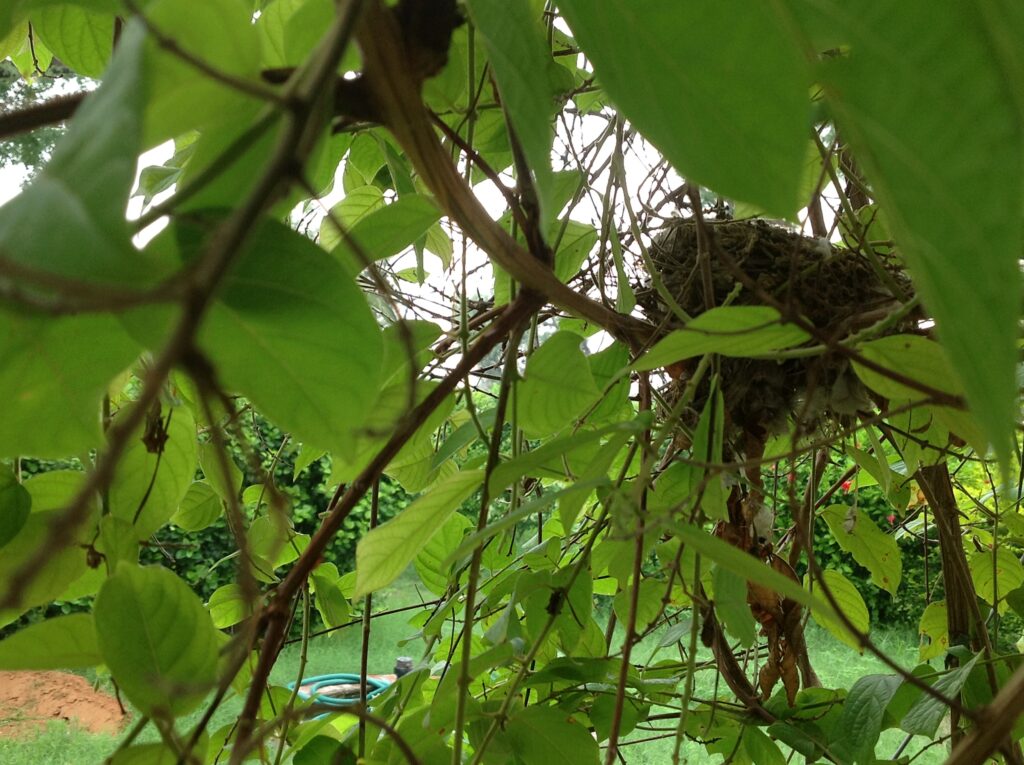
This vine, which begins life looking like a shrub but grows into a vine, has heavy clusters of red, sweet smelling flowers. It is highly ornamental and flowers virtually round the year, the fragrance of the blooms being most striking at night. One of its nicknames is “drunken sailor”, perhaps because the flower clusters become so large and heavy that their stems are barely able to support their weight! What makes the flowers utterly charming is that when they first bloom, they are white, gradually turning to pink, and finally to red. The plant is prized for its medicinal value. It grows in our front garden wrapping itself around the large khejri tree trunks, and around the pergola in the Eastern court where it makes for an attractive screen with its dense green leaves and colourful flower display. In the monsoons, we have sometimes found little red-vented bulbuls’ nests sitting snugly in the midst of the dense foliage.
8. Botanical name: Catharanthus roseus
Common name: periwinkle
Family: Apocynaceae
Hindi name: Baramasi
Sanskrit name: Sadabahaar
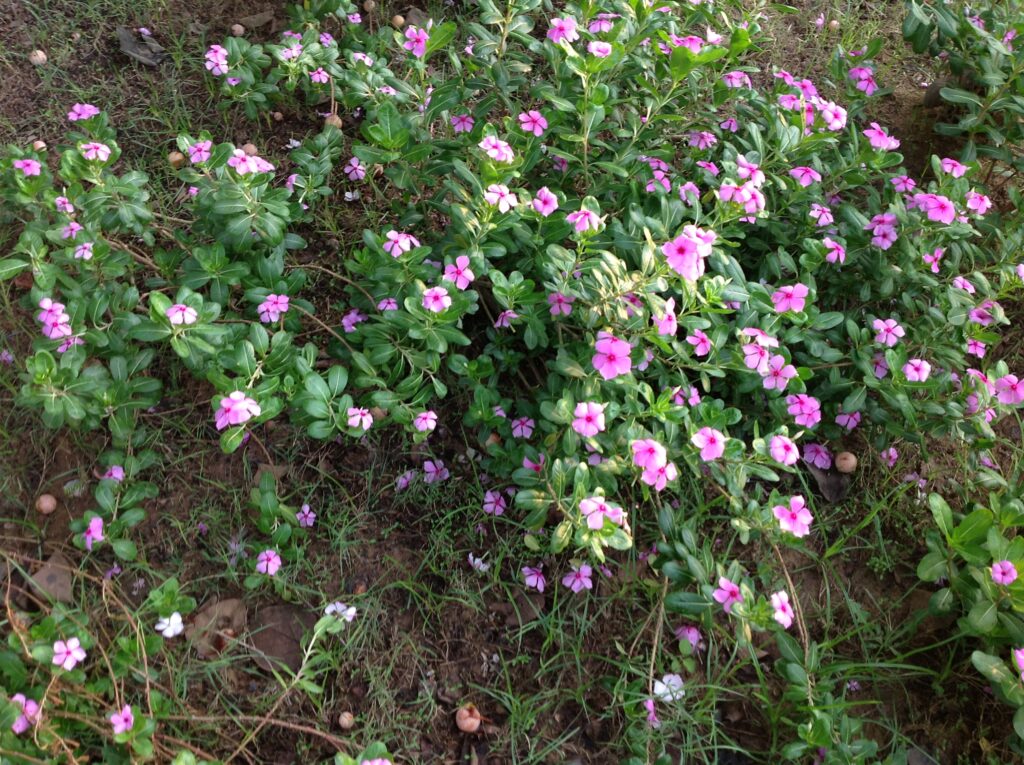

The white and pink periwinkle blossoms can be found in masses everywhere at Savista, flowering round the year. The hardy little plant with its flowers set against glossy dark green leaves makes for an innocuously commonplace sight; how many of us know that the plant has awesome anti-cancer properties for which it is prized.
9. Tradescantia pallida
Common name: purple heart, purple queen
Family: Commelinaceae (dayflower)
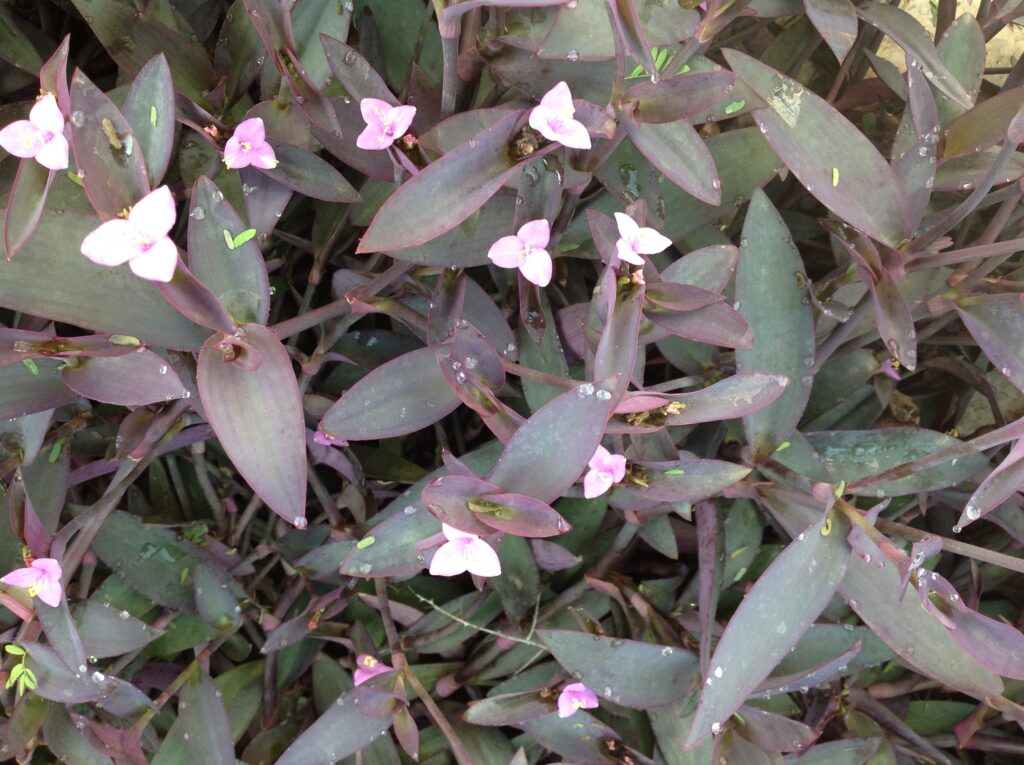
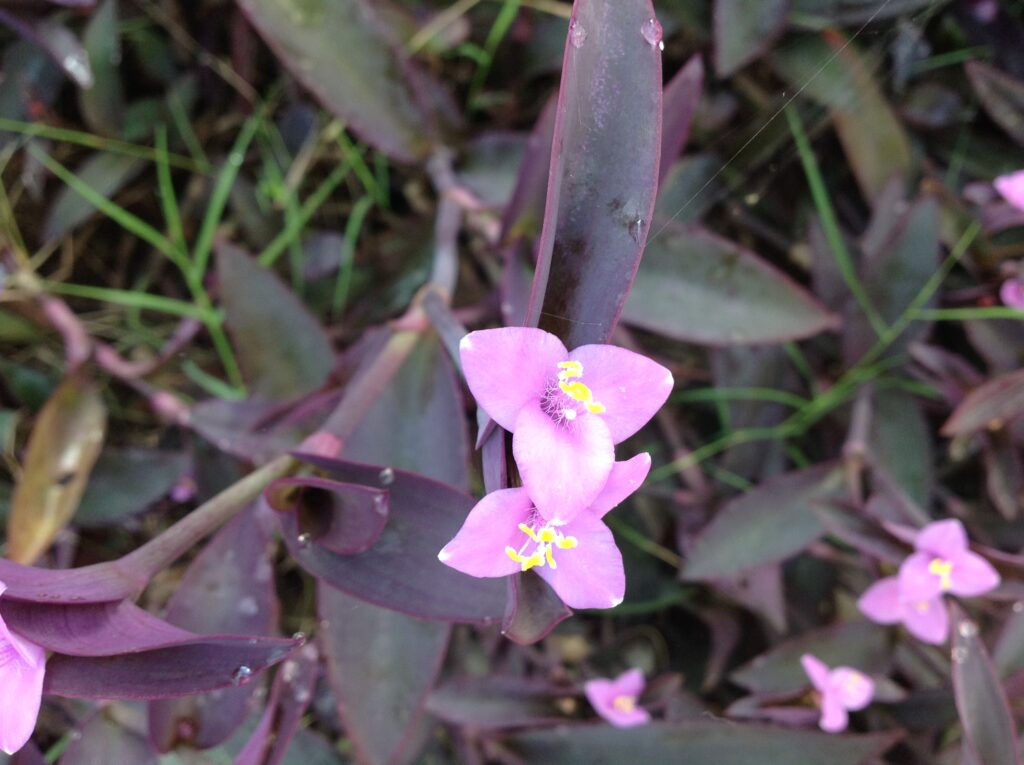
This is an evergreen perennial plant that scrambles along the ground. It has elongated pointed leaves that are a deep purple in the shade but turn a greenish purple in the bright sun when the tiny three petalled purple flowers also bloom. The flowers close up and the leaves get back their purple tinge when the sun sets. We have this plant as a border where it provides an effective contrast to the green foliage all around.
10. Blue water lily/Indian Blue Lotus
Botanical name: Nymphaea nouchali
Family: Nymphaeaceae (water lily family)
Hindi name: Neelkamal
Sanskrit name: Krishna Kamalam/Nilotpala
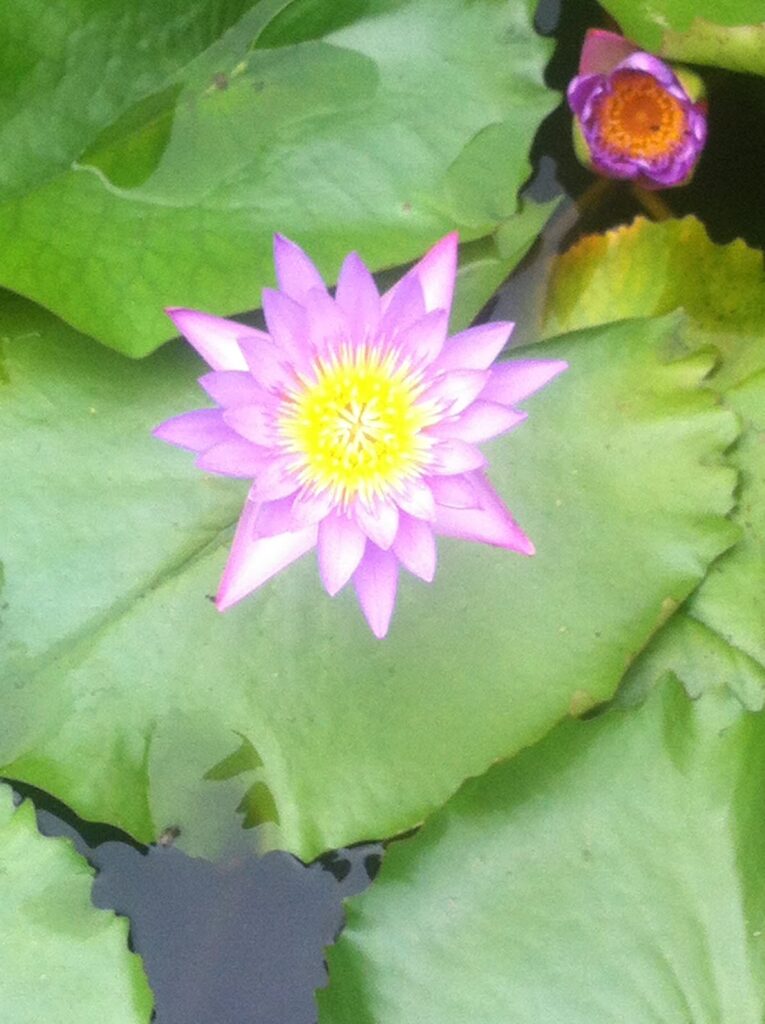
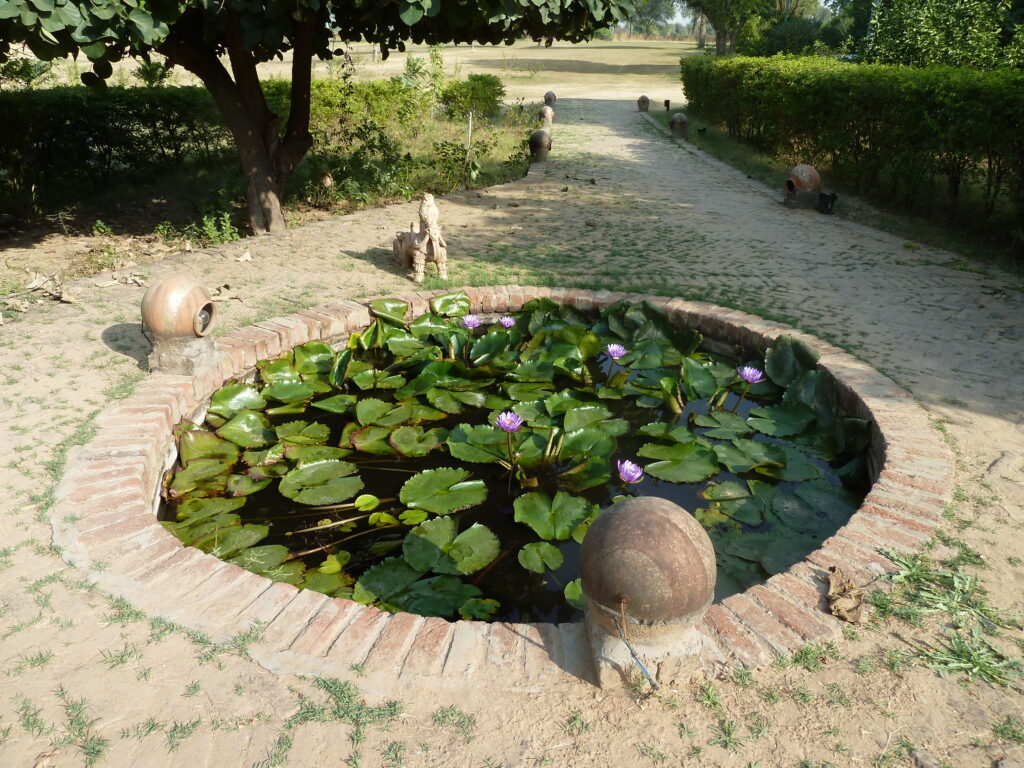
The blue lotus is sacred in most ancient cultures, most notably the Buddhist, Hindu and Egyptian. In the former, it symbolises purity and enlightenment and in the Egyptian its power and divinity is likened to the sun. It is also a medicinal plant in the Indian ayurvedic tradition. It blooms with the sunrise and closes at dusk. At Savista, the blue lotus/lily fills the lily pools in our gardens.
11. Indian magnolia
Common name: Frangipani
Botanical name: Plumeria, Magnolia champaca
Family: Apocynaceae
Hindi name: Champa
Sanskrit name: champakam
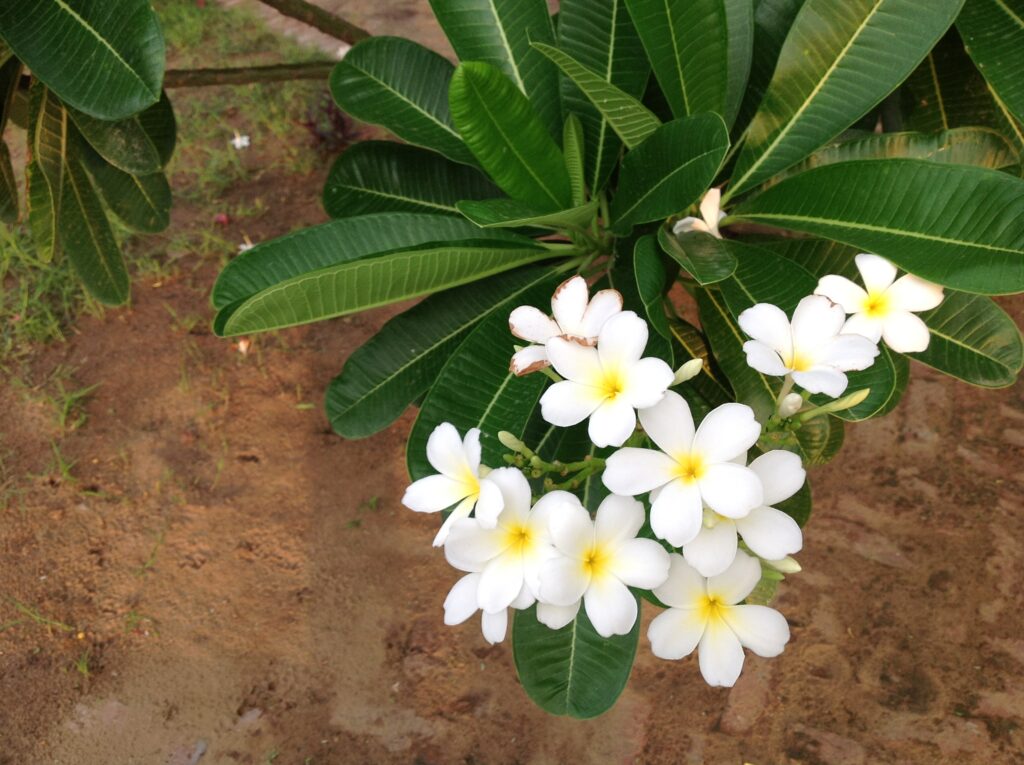
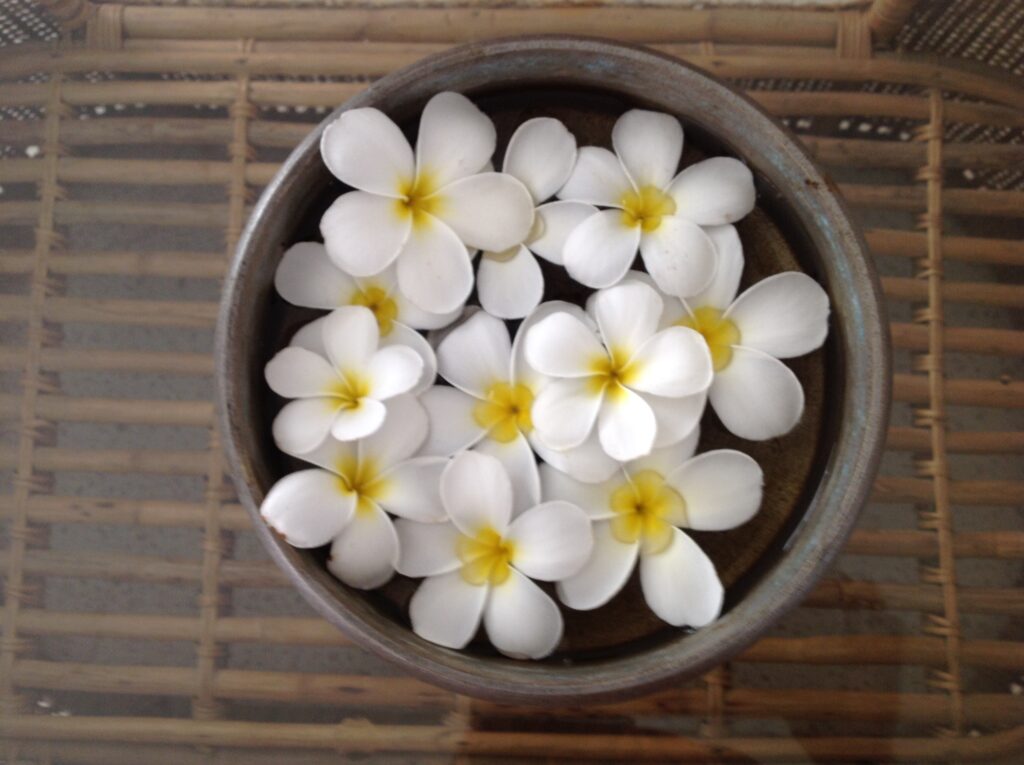
Known best for the fragrance of its beautiful cream and yellow flowers – the fragrance is used in the making of incense sticks in India – the Champa is associated with worship, and is grown in temples and as an ornamental shrub. Perhaps the reason for its association with worship is that the flowers can be used without violence to the plant. In the early mornings, one can find fully bloomed Champa flowers that have detached themselves from their stems and come to rest gently on a bed of leaves on the plant, as if in readiness to be offered to the gods. At Savista we have several Champa trees and use these ‘fallen’ blossoms as floating flowers in our indoor vases. Although scented and beautiful, the flowers contain no nectar, thus attracting but then duping butterflies and birds. Both the flowers and bark are used in Ayurvedic medicine.

